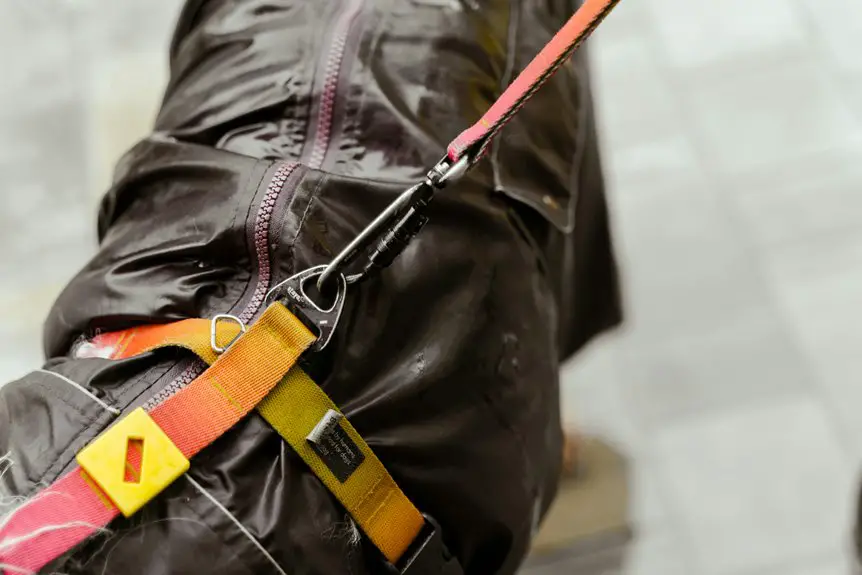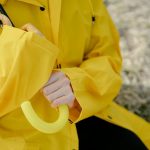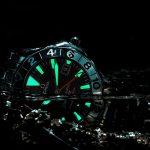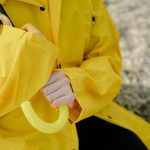You can’t count on Gore-Tex Windstopper fabric to be fully waterproof—it’s designed to block wind while offering only light water resistance. It repels light rain or drizzle with a durable water repellent (DWR) coating but may let water through during heavy or prolonged exposure. Windstopper excels in breathability and comfort for active use but needs extra waterproof layers in serious wet conditions. Keep exploring to understand how it performs and how to care for it best.
Table of Contents
Key Takeaways
- Gore-Tex Windstopper fabric is windproof and water-resistant, but not fully waterproof under heavy rain.
- It repels light rain and drizzle but may allow water seepage in prolonged or intense rainfall.
- The fabric’s microporous membrane blocks wind while allowing moisture vapor to escape for breathability.
- Durable water repellent (DWR) coating enhances water resistance but requires maintenance for optimal performance.
- For heavy or extended wet conditions, additional waterproof layers are necessary beyond Windstopper fabric.
Understanding Gore-Tex Windstopper Technology
Although you might already know Gore-Tex Windstopper fabric for blocking wind effectively, understanding its technology reveals much more.
When you wear Windstopper, you benefit from a specialized membrane that’s incredibly thin yet durable. This membrane is made of expanded polytetrafluoroethylene (ePTFE), which has microscopic pores small enough to prevent wind from passing through. At the same time, it allows moisture vapor from sweat to escape, keeping you comfortable during physical activities.
The outer layers of the fabric are designed to protect this membrane from damage and provide softness, flexibility, and breathability.
How Windstopper Fabric Blocks Wind
The key to Windstopper fabric’s effectiveness lies in how it blocks wind while maintaining breathability. When you wear it, the fabric acts as a barrier against cold gusts without trapping moisture inside.
Windstopper fabric blocks cold winds while letting moisture escape for all-day comfort.
Here’s how it works:
- Microporous Membrane: The fabric contains a thin, microporous membrane that physically blocks wind particles but allows water vapor to escape.
- Dense Weave: The outer layer is tightly woven, which reduces air permeability and prevents wind from penetrating.
- Breathable Design: Unlike traditional windbreakers, Windstopper’s design balances windproofing with airflow, so you stay comfortable without overheating.
Water Resistance vs. Waterproof: What’s the Difference?
You might think water resistance and waterproof mean the same thing, but they actually differ quite a bit.
Water-resistant fabrics can handle light rain or splashes, while waterproof materials block water completely, even under heavy exposure.
Understanding these differences will help you know what to expect from Gore-Tex Windstopper fabric.
Water Resistance Defined
When you’re choosing outdoor gear, understanding the difference between water resistance and waterproof can save you from unexpected soggy surprises.
Water resistance means the fabric can repel water to some extent but won’t keep you dry in heavy rain or prolonged exposure. It’s designed to handle light moisture like drizzle or sweat.
Here’s how water resistance works:
- Fabric is treated with a durable water repellent (DWR) coating that causes water to bead and roll off.
- The material blocks water penetration for a limited time or under low pressure.
- Water resistance isn’t permanent; the protective coating can wear off and needs reapplication.
Knowing this helps you pick gear suited to your outdoor conditions without overestimating its protection.
Waterproof Characteristics Explained
Although water resistance can handle light moisture, true waterproof fabrics keep water out entirely, even under heavy rain or immersion. When you choose waterproof gear, you’re looking for materials that block water penetration while allowing moisture vapor to escape, keeping you dry inside and out. Water-resistant fabrics, like Gore-Tex Windstopper, repel water but aren’t fully waterproof under prolonged exposure. Understanding these differences helps you pick the right gear for your needs.
| Feature | Water-Resistant Fabrics | Waterproof Fabrics |
|---|---|---|
| Water Protection | Handles light rain, sprays | Blocks heavy rain, immersion |
| Breathability | High | Moderate to high |
| Durability | Moderate | High |
| Typical Use | Light outdoor activities | Hiking, mountaineering, rainwear |
Performance of Windstopper Fabric in Rain
Since Windstopper fabric is designed primarily to block wind, its performance in rain can vary depending on the intensity and duration of the rainfall.
You’ll find it offers some water resistance but isn’t fully waterproof. Here’s what to expect:
- In light rain or drizzle, Windstopper fabric will keep you relatively dry as it repels water on the surface.
- During moderate rain, water may start to seep in after extended exposure since the fabric isn’t fully sealed against moisture.
- In heavy or prolonged rain, Windstopper won’t prevent water penetration, so you’ll need an additional waterproof layer to stay dry.
Understanding these points helps you decide when Windstopper alone is enough or when extra protection is necessary.
Comparing Windstopper to Other Waterproof Fabrics
If you need reliable protection from both wind and heavy rain, you’ll want to understand how Windstopper compares to fully waterproof fabrics like Gore-Tex or eVent.
Windstopper excels at blocking wind completely, making it ideal for windy conditions. However, it’s only water-resistant, not fully waterproof, so heavy or prolonged rain can eventually soak through.
In contrast, Gore-Tex and eVent fabrics use membrane technology that actively repels water while allowing moisture vapor to escape, keeping you dry even in persistent downpours. These fabrics also provide higher breathability under wet conditions.
Best Use Cases for Gore-Tex Windstopper
You’ll find Gore-Tex Windstopper perfect for activities where wind protection and breathability matter most, like hiking or cycling on chilly days.
Its fabric blocks cold winds while letting moisture escape, keeping you comfortable without overheating.
Let’s explore how these performance benefits make it a top choice for your outdoor gear.
Ideal Outdoor Activities
Although Gore-Tex Windstopper fabric isn’t fully waterproof, it excels at blocking wind and providing lightweight warmth, making it perfect for activities like hiking, cycling, and running in cool, breezy conditions.
You’ll appreciate its breathability and comfort when you need protection without bulk.
Here are ideal outdoor activities for Windstopper gear:
- Trail Running – Stay shielded from wind chills while maintaining airflow during intense movement.
- Mountain Biking – Ride comfortably through gusty winds without overheating or feeling restricted.
- Day Hiking – Enjoy wind protection on exposed ridges or during sudden temperature drops without sacrificing mobility.
Choose Windstopper when you want reliable wind resistance paired with breathability for active outdoor adventures.
Fabric Performance Benefits
Gore-Tex Windstopper fabric offers more than just wind resistance—it combines breathability and lightweight warmth to enhance your comfort during physical activities.
You’ll appreciate how it blocks harsh winds without causing overheating, making it ideal for hiking, cycling, or running in variable weather. Its breathable membrane lets moisture escape, so sweat doesn’t build up, keeping you dry from the inside out.
While it’s not fully waterproof, it does repel light rain and snow, allowing you to stay comfortable during brief wet conditions.
This fabric performs best when you need protection against wind and mild moisture without sacrificing ventilation or mobility.
Choosing Gore-Tex Windstopper means you’re geared for active use, balancing weather defense with breathable comfort.
Caring for and Maintaining Windstopper Gear
To keep your Windstopper gear performing at its best, you need to clean and maintain it regularly. Proper care guarantees the fabric retains its windproof and breathable qualities.
Here’s how you can do it effectively:
- Wash Correctly: Use a gentle cycle with cold water and a mild detergent. Avoid fabric softeners and bleach, as they can damage the membrane.
- Dry Properly: Air-dry your gear or tumble dry on low heat to reactivate the durable water repellent (DWR) coating.
- Reapply DWR: When water stops beading on the surface, apply a spray-on or wash-in DWR treatment to restore water resistance.
Following these steps helps maintain your Windstopper gear’s performance and extends its lifespan.
Frequently Asked Questions
Can Windstopper Fabric Be Layered With Other Waterproof Materials?
You can definitely layer Windstopper fabric with other waterproof materials to boost protection. It blocks wind effectively but isn’t fully waterproof, so combining it with waterproof layers keeps you dry and comfortable in wet conditions.
Is Windstopper Fabric Breathable During Intense Physical Activities?
You won’t feel like you’re trapped in a sauna; Windstopper fabric breathes well enough during intense activities to keep sweat at bay. It balances wind protection with ventilation, so you’ll stay comfortable without overheating.
How Does Windstopper Fabric Perform in Cold, Dry Conditions?
In cold, dry conditions, Windstopper fabric keeps you warm by blocking wind effectively while allowing some breathability. You won’t get soaked, but it’s not fully waterproof, so layering helps manage moisture and temperature.
Are There Any Environmental Concerns With Producing Windstopper Fabric?
You should know that producing Windstopper fabric involves chemical processes that can impact the environment. Companies are working to reduce emissions and use sustainable materials, but some concerns about pollution and resource use still remain.
Can Windstopper Garments Be Safely Machine Washed Without Damage?
Think of your windstopper garment as a delicate knight; you wouldn’t throw it into a dragon’s fiery pit—machine wash it gently on cold, use mild detergent, and avoid fabric softeners to keep its armor intact and strong.
- Are Corduroy Pants Warm? Discover Their Comfort and Style - July 3, 2025
- Steam Corduroy: The Best Way to Care for Your Fabric - July 3, 2025
- The Benefits of Corduroy Pants: Style and Comfort Explained - July 3, 2025







